
Why Did Hamas Attack? Understanding the October 7 Assault and Its Implications
The humanitarian crisis is not merely a local issue; it resonates globally. Images of suffering civilians in Gaza prompt international outrage, influencing public opinion and diplomatic relations. The challenge will be finding a balance between addressing humanitarian concerns and navigating the political landscape of the region, which is fraught with challenges.

To grasp the full extent of the humanitarian crisis, “The Gaza Strip: The Political Economy of De-Development” by Sara Roy offers a critical analysis of the ongoing de-development in Gaza, shedding light on the socioeconomic factors contributing to the humanitarian crisis.
Future of Hamas and Palestinian Politics
The October 7 attack has thrown Hamas’s position in Palestinian politics into a whirlwind. With the dramatic escalation of violence, the group’s role as a key player has been both solidified and challenged. On one hand, Hamas has reasserted itself as a dominant force, reclaiming a narrative of resistance against Israeli aggression. Many Palestinians view the attack as a bold statement of defiance. This sense of empowerment could enhance Hamas’s standing among the populace, especially given the dire humanitarian conditions in Gaza.
However, the aftermath presents significant challenges. The scale of the Israeli military response has led to catastrophic civilian casualties. Reports indicate over 41,600 Palestinian deaths, primarily among non-combatants. Such devastation raises serious questions about Hamas’s governance and its ability to protect its people. The group’s image as a protector may falter if it fails to provide safety and basic needs amidst the chaos.
For the Palestinian Authority (PA), the attack complicates its already tenuous position. The PA has been struggling to maintain legitimacy, often criticized for its ineffective governance. As Hamas gains traction, the PA risks becoming increasingly marginalized. This dynamic could lead to intensified competition for leadership within Palestinian politics.
Other factions, like Palestinian Islamic Jihad, may also seek to capitalize on the situation. They could push for more aggressive actions against Israel, challenging Hamas’s narrative and tactics. This competition could fragment Palestinian unity, making it harder to achieve collective goals.
Opportunities exist, however. If the international community responds with significant humanitarian aid and diplomatic pressure, it could provide a path forward. Both Hamas and the PA might need to engage in dialogue to address the humanitarian crisis. A unified front could ultimately strengthen their negotiating power on the global stage.
In summary, while Hamas’s attack has reaffirmed its role in Palestinian politics, the consequences of this action introduce a complex landscape. The interplay between power dynamics, humanitarian issues, and external influences will shape the future of Palestine. The coming months will be crucial in determining whether this moment marks the beginning of a new chapter or a deeper entrenchment in conflict. The stakes are high, and the outcomes remain uncertain.
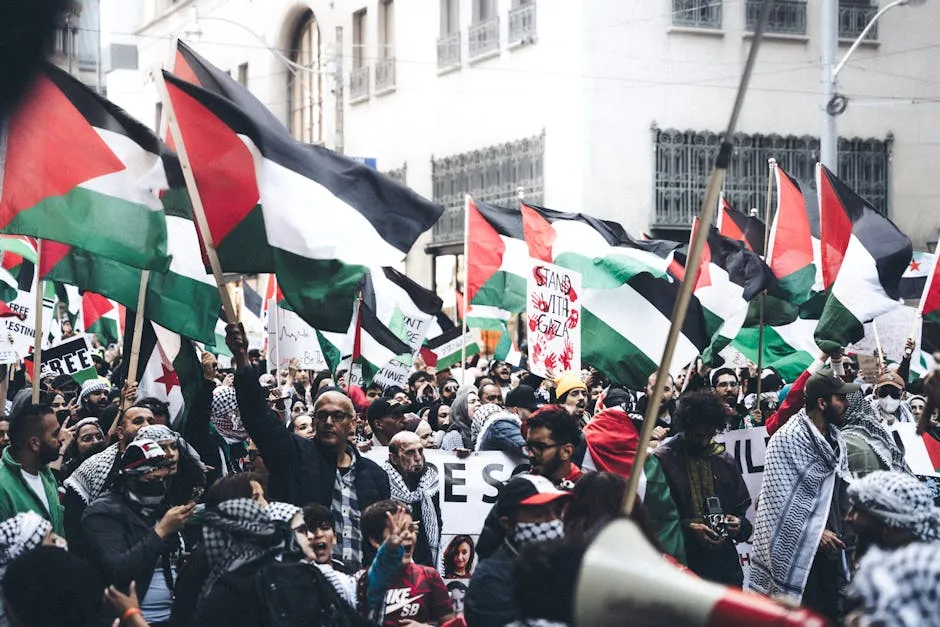
For those looking to understand the broader implications of the conflict, “The Question of Palestine” by Edward W. Said provides a profound exploration of the Palestinian narrative and its significance within the larger context of the conflict.
Conclusion
In conclusion, the October 7 attack by Hamas represents a critical juncture in the Israeli-Palestinian conflict, encapsulating decades of unresolved grievances and escalating tensions. As both sides brace for the implications of this event, understanding the underlying motivations and broader context becomes essential for any meaningful dialogue about peace and resolution. The path forward remains fraught with challenges, but recognizing the complexities of this conflict is a crucial step towards fostering a more informed and empathetic discourse.
The attack has highlighted the ongoing humanitarian crisis in Gaza, creating a dire situation for millions of civilians. The international community is called to respond with urgency, ensuring humanitarian aid reaches those in need while also advocating for a ceasefire. This moment offers a unique opportunity to reassess strategies for peace, focusing on dialogue rather than violence.
As Hamas and Israel engage in this brutal back-and-forth, it is vital for all stakeholders to prioritize the lives of civilians. History teaches us that cycles of violence rarely yield lasting solutions. Instead, a commitment to dialogue and understanding can pave the way for a more stable future. The complexities of the Israeli-Palestinian conflict require nuanced approaches that address historical grievances while fostering coexistence.
The future of the region hinges on addressing both immediate concerns and long-term aspirations for peace. Only through comprehensive negotiations can the aspirations of both Israelis and Palestinians be met. As we move forward, the lessons from October 7 must guide our collective efforts to build a just and lasting peace.
FAQs
What were the main motivations behind Hamas’s attack on October 7?
Hamas cited long-standing grievances against Israeli policies, particularly regarding the occupation of Palestinian territories and recent violence at the al-Aqsa mosque. They framed the attack as a necessary response to decades of perceived oppression.
How has the international community responded to the attack?
The international community has responded with a mix of condemnation and calls for restraint. Many countries, including the United States, reaffirmed their support for Israel’s right to defend itself. Simultaneously, there have been urgent appeals for humanitarian aid to Gaza.
What are the implications of the attack for future peace negotiations?
The attack complicates future peace negotiations significantly. The cycle of violence may deepen distrust between both sides, making diplomatic efforts even more challenging. However, it could also prompt renewed international focus on the need for a resolution to the conflict.
How does the humanitarian situation in Gaza relate to the conflict?
The humanitarian situation in Gaza is dire, exacerbated by blockades and ongoing military operations. The conflict has led to significant civilian casualties and suffering, which fuels resentment and complicates peace efforts.
What is the historical context of Hamas’s relationship with Israel?
Hamas, established in 1987, has always been fundamentally opposed to Israel’s existence. Its relationship has been marked by cycles of violence, political maneuvering, and a struggle for legitimacy among Palestinians. Over the years, Hamas has engaged in numerous conflicts with Israel, each escalating tensions further.
Understanding the complexities behind Hamas’s actions is crucial, especially considering the recent attack. Why did Hamas attack?
Please let us know what you think about our content by leaving a comment down below!
Thank you for reading till here 🙂
All images from Pexels
The complex web of alliances and leadership dynamics shapes Hamas’s actions and responses within the ever-evolving Middle Eastern landscape.

For a deeper dive into the political landscape, consider reading “The Israeli-Palestinian Conflict: A People’s War” by James L. Gelvin, which provides an insightful perspective on the intricate relationships and historical narratives surrounding this ongoing struggle.
The Role of Regional Politics
Hamas’s decision to attack on October 7, 2023, did not occur in a vacuum. Regional politics played a significant role in shaping its strategy. One of the pressing factors was the push for Arab-Israeli normalization. Countries like the United Arab Emirates and Bahrain had recently signed agreements with Israel, signaling a shift in regional alliances. This normalization threatened Hamas’s narrative as the primary defender of Palestinian rights. The group likely viewed the attack as a way to reassert its relevance amidst these changing dynamics.
Iran’s unwavering support for Hamas also influenced the group’s calculations. Tehran has been a significant backer, providing financial resources, military training, and arms. This support strengthened Hamas’s position, especially as it felt emboldened by Iran’s commitment to opposing Israel. In the context of a rapidly evolving geopolitical landscape, Hamas’s leadership may have believed that a decisive attack would garner regional attention and reaffirm their role in the Palestinian resistance.

Humanitarian Crisis in Gaza
The dire humanitarian conditions in Gaza cannot be overlooked when considering Hamas’s motives. With unemployment rates soaring and access to basic necessities severely restricted, many Gazans live in overwhelming poverty. This environment has fostered deep-seated resentment towards Israel and its allies. Hamas, seeking to capitalize on this discontent, presents itself as a champion of the oppressed.
Public sentiment within Gaza significantly impacts Hamas’s legitimacy. Many residents view the organization as their only viable defense against perceived Israeli aggression. Despite the criticism of its governance, the group remains popular among those who feel marginalized and forgotten. The ongoing blockade and military actions have created a narrative where Hamas’s military efforts are framed as a necessary response to ongoing Israeli oppression, reinforcing its support base. As a result, the humanitarian crisis not only fuels Hamas’s actions but also solidifies its standing among the Palestinian population.
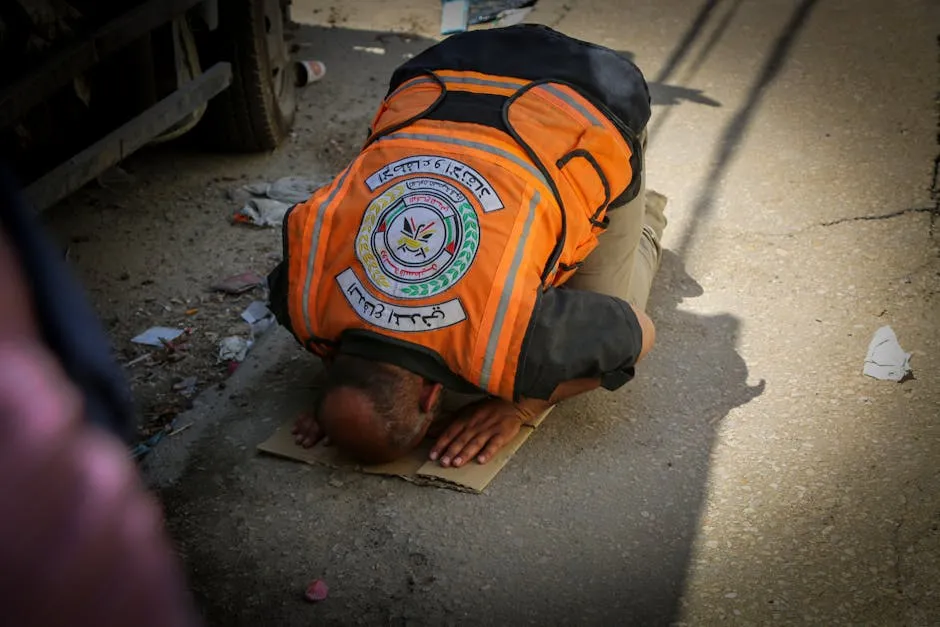
For those interested in understanding the humanitarian implications, “Gaza: An Inquest into Its Martyrdom” by Norman Finkelstein provides a compelling narrative on the impact of conflict on the civilians of Gaza. This book sheds light on the ongoing humanitarian crisis and the complexities involved.
Israeli Response
In the aftermath of the October 7 attacks, Israel reacted swiftly and decisively. Prime Minister Benjamin Netanyahu declared that the nation was “at war” with Hamas, marking a significant escalation in the conflict. The Israeli military launched extensive airstrikes across Gaza, targeting Hamas infrastructure, command centers, and rocket launch sites. The objective? Dismantle Hamas’s military capabilities and restore security to Israeli citizens.
Israel’s response was not just military. Politically, it galvanized public support for a robust offensive against Hamas. Netanyahu’s government faced criticism for its previous handling of security but shifted the narrative to one of vengeance and national unity. The Israeli public, shaken by the scale of the attacks, rallied behind the government’s vow to retaliate.
Internationally, responses varied widely. The United States reaffirmed its support for Israel, emphasizing its right to defend itself. Meanwhile, the United Nations and various humanitarian organizations expressed grave concern over the escalating violence and its humanitarian implications for Gaza’s civilian population. Countries across Europe and the Middle East called for restraint, highlighting the urgent need for humanitarian access to those affected in Gaza.
The ramifications of Israel’s military response are profound. With ongoing airstrikes leading to significant casualties, the international community braces for a potential humanitarian crisis. This situation complicates diplomatic relations and foreign policy regarding the Israeli-Palestinian conflict, as nations grapple with how best to address both Israeli security needs and the humanitarian plight of Palestinians.
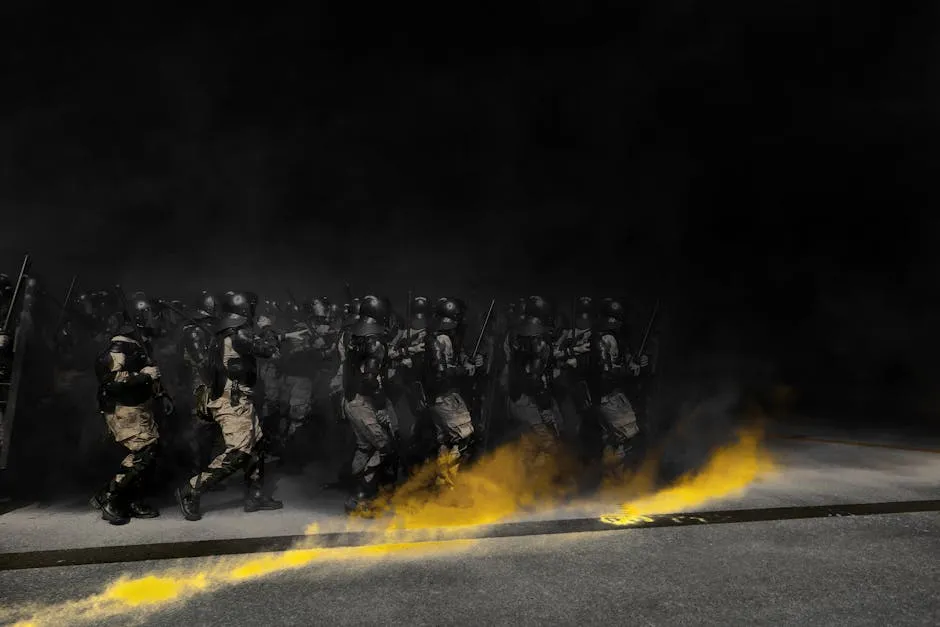
Long-term Consequences
Shifts in Regional Dynamics
The October 7 attack has significantly altered the balance of power in the region. Hamas’s unprecedented assault on Israel has not only shifted military dynamics but also redefined alliances. Traditionally viewed as a terrorist organization, Hamas is now seen by some as a formidable player in Middle Eastern politics. This shift could embolden other militant groups, leading to a more fragmented and volatile landscape.
In response to the attack, Israel has strengthened its military posture and sought closer ties with allies, particularly the United States. This might lead to a renewed focus on regional security cooperation, particularly in countering Iranian influence. However, the increased militarization could also escalate tensions further, potentially leading to greater conflict.
Moreover, Arab nations that have sought normalization with Israel may find their positions challenged. The attack has reignited discussions about Palestinian rights and the broader Arab-Israeli conflict, putting pressure on leaders who have engaged with Israel to reconsider their stances. This dynamic could lead to a renewed focus on Palestinian statehood, complicating future diplomatic efforts.
As for Israeli-Palestinian relations, the attack serves as a stark reminder of the deep-seated grievances that fuel the conflict. Future peace negotiations may be marred by distrust and heightened animosity, making resolution increasingly elusive. The long-term implications could involve a cycle of retaliation, undermining any prospects for stability in the region.

Humanitarian Considerations
The ongoing humanitarian crisis in Gaza is a direct consequence of the October 7 attack and subsequent Israeli military operations. The airstrikes have devastated infrastructure, leading to widespread destruction of homes, hospitals, and schools. The death toll in Gaza has soared, with tens of thousands reported dead, many of whom are civilians. The humanitarian situation is dire, with access to essential services severely restricted.
Food insecurity is rampant, affecting nearly all of Gaza’s 2.3 million residents. The blockade, exacerbated by the conflict, has left many without access to clean water, medical supplies, or adequate shelter. International humanitarian organizations are struggling to provide aid amid continuous hostilities, leading to calls for ceasefires to allow essential supplies to reach those in need.
Diplomatic avenues for resolution appear limited. While some nations push for negotiations, others focus on immediate humanitarian assistance. The complexity of the situation demands a multifaceted approach that addresses both the urgent needs of Gazans and the underlying political issues fueling the conflict.
The humanitarian crisis is not merely a local issue; it resonates globally. Images of suffering civilians in Gaza prompt international outrage, influencing public opinion and diplomatic relations. The challenge will be finding a balance between addressing humanitarian concerns and navigating the political landscape of the region, which is fraught with challenges.

To grasp the full extent of the humanitarian crisis, “The Gaza Strip: The Political Economy of De-Development” by Sara Roy offers a critical analysis of the ongoing de-development in Gaza, shedding light on the socioeconomic factors contributing to the humanitarian crisis.
Future of Hamas and Palestinian Politics
The October 7 attack has thrown Hamas’s position in Palestinian politics into a whirlwind. With the dramatic escalation of violence, the group’s role as a key player has been both solidified and challenged. On one hand, Hamas has reasserted itself as a dominant force, reclaiming a narrative of resistance against Israeli aggression. Many Palestinians view the attack as a bold statement of defiance. This sense of empowerment could enhance Hamas’s standing among the populace, especially given the dire humanitarian conditions in Gaza.
However, the aftermath presents significant challenges. The scale of the Israeli military response has led to catastrophic civilian casualties. Reports indicate over 41,600 Palestinian deaths, primarily among non-combatants. Such devastation raises serious questions about Hamas’s governance and its ability to protect its people. The group’s image as a protector may falter if it fails to provide safety and basic needs amidst the chaos.
For the Palestinian Authority (PA), the attack complicates its already tenuous position. The PA has been struggling to maintain legitimacy, often criticized for its ineffective governance. As Hamas gains traction, the PA risks becoming increasingly marginalized. This dynamic could lead to intensified competition for leadership within Palestinian politics.
Other factions, like Palestinian Islamic Jihad, may also seek to capitalize on the situation. They could push for more aggressive actions against Israel, challenging Hamas’s narrative and tactics. This competition could fragment Palestinian unity, making it harder to achieve collective goals.
Opportunities exist, however. If the international community responds with significant humanitarian aid and diplomatic pressure, it could provide a path forward. Both Hamas and the PA might need to engage in dialogue to address the humanitarian crisis. A unified front could ultimately strengthen their negotiating power on the global stage.
In summary, while Hamas’s attack has reaffirmed its role in Palestinian politics, the consequences of this action introduce a complex landscape. The interplay between power dynamics, humanitarian issues, and external influences will shape the future of Palestine. The coming months will be crucial in determining whether this moment marks the beginning of a new chapter or a deeper entrenchment in conflict. The stakes are high, and the outcomes remain uncertain.

For those looking to understand the broader implications of the conflict, “The Question of Palestine” by Edward W. Said provides a profound exploration of the Palestinian narrative and its significance within the larger context of the conflict.
Conclusion
In conclusion, the October 7 attack by Hamas represents a critical juncture in the Israeli-Palestinian conflict, encapsulating decades of unresolved grievances and escalating tensions. As both sides brace for the implications of this event, understanding the underlying motivations and broader context becomes essential for any meaningful dialogue about peace and resolution. The path forward remains fraught with challenges, but recognizing the complexities of this conflict is a crucial step towards fostering a more informed and empathetic discourse.
The attack has highlighted the ongoing humanitarian crisis in Gaza, creating a dire situation for millions of civilians. The international community is called to respond with urgency, ensuring humanitarian aid reaches those in need while also advocating for a ceasefire. This moment offers a unique opportunity to reassess strategies for peace, focusing on dialogue rather than violence.
As Hamas and Israel engage in this brutal back-and-forth, it is vital for all stakeholders to prioritize the lives of civilians. History teaches us that cycles of violence rarely yield lasting solutions. Instead, a commitment to dialogue and understanding can pave the way for a more stable future. The complexities of the Israeli-Palestinian conflict require nuanced approaches that address historical grievances while fostering coexistence.
The future of the region hinges on addressing both immediate concerns and long-term aspirations for peace. Only through comprehensive negotiations can the aspirations of both Israelis and Palestinians be met. As we move forward, the lessons from October 7 must guide our collective efforts to build a just and lasting peace.
FAQs
Understanding the complexities behind Hamas’s actions is crucial, especially considering the recent attack. Why did Hamas attack?
Please let us know what you think about our content by leaving a comment down below!
Thank you for reading till here 🙂
All images from Pexels
The group’s history is marked by a series of conflicts with Israel, including significant escalations in 2008, 2012, and 2014. Each confrontation has left deep scars on both sides, particularly among Palestinians living in Gaza, where the humanitarian conditions remain dire.

If you’re interested in understanding the full history of Hamas and its implications, check out “Hamas: A History from Within” by Azzam Tamimi. This book delves into the origins and motivations of Hamas, providing a comprehensive backdrop to the ongoing conflict.
Goals of Hamas
Hamas’s declared objectives include the establishment of an Islamic state governed by Sharia law across historic Palestine, which encompasses present-day Israel, the West Bank, and Gaza. Its charter explicitly rejects Israel’s right to exist, positioning the organization as a staunch opponent of Israeli policies. Initially, Hamas indicated a willingness to accept a Palestinian state limited to Gaza and the West Bank. However, it maintains its claim over all of historic Palestine, which complicates any potential negotiations for peace.
Hamas’s ideology is deeply rooted in resistance against perceived Israeli oppression. The organization frames its actions as a response to decades of violence against Palestinians, including military actions and settlement expansions. This narrative resonates strongly within Gaza, where many view Hamas as a legitimate defender of Palestinian rights.
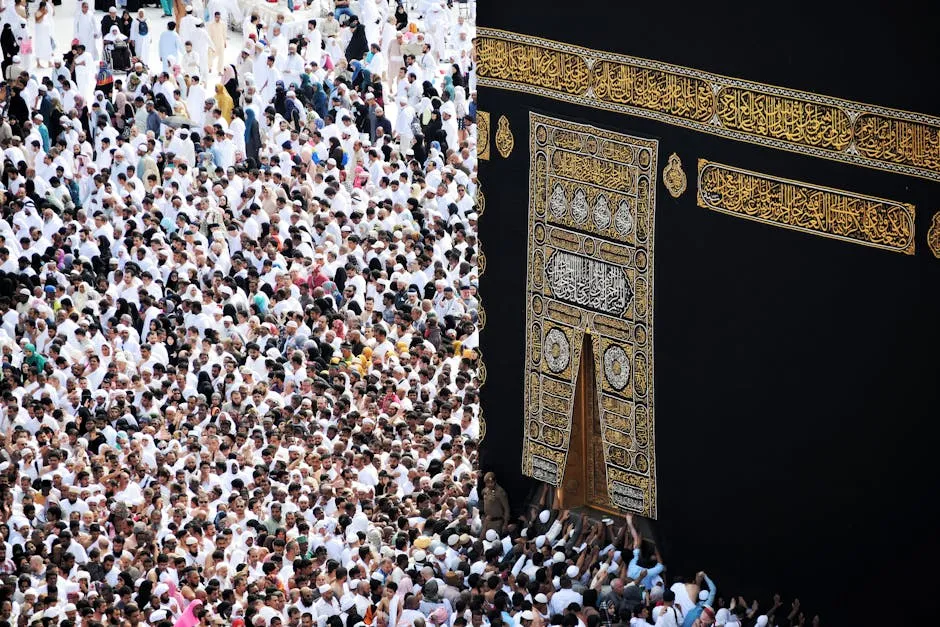
Leadership and Alliances
The leadership structure of Hamas has evolved over time. Key figures include Ismail Haniyeh, the political chief, and Yahya Sinwar, who leads the military wing in Gaza. Their leadership is often characterized by a blend of pragmatism and militancy, attempting to balance governance with armed resistance.
Hamas has forged crucial alliances with regional powers, chiefly Iran and Syria. Iran provides financial support, military training, and arms to Hamas, enhancing its operational capabilities. This relationship is critical, especially as regional dynamics shift, impacting Hamas’s strategy and ability to act. Furthermore, Qatar’s support has also played a significant role, offering a safe haven for some leaders and financial aid to the Gaza Strip.
The complex web of alliances and leadership dynamics shapes Hamas’s actions and responses within the ever-evolving Middle Eastern landscape.

For a deeper dive into the political landscape, consider reading “The Israeli-Palestinian Conflict: A People’s War” by James L. Gelvin, which provides an insightful perspective on the intricate relationships and historical narratives surrounding this ongoing struggle.
The Role of Regional Politics
Hamas’s decision to attack on October 7, 2023, did not occur in a vacuum. Regional politics played a significant role in shaping its strategy. One of the pressing factors was the push for Arab-Israeli normalization. Countries like the United Arab Emirates and Bahrain had recently signed agreements with Israel, signaling a shift in regional alliances. This normalization threatened Hamas’s narrative as the primary defender of Palestinian rights. The group likely viewed the attack as a way to reassert its relevance amidst these changing dynamics.
Iran’s unwavering support for Hamas also influenced the group’s calculations. Tehran has been a significant backer, providing financial resources, military training, and arms. This support strengthened Hamas’s position, especially as it felt emboldened by Iran’s commitment to opposing Israel. In the context of a rapidly evolving geopolitical landscape, Hamas’s leadership may have believed that a decisive attack would garner regional attention and reaffirm their role in the Palestinian resistance.

Humanitarian Crisis in Gaza
The dire humanitarian conditions in Gaza cannot be overlooked when considering Hamas’s motives. With unemployment rates soaring and access to basic necessities severely restricted, many Gazans live in overwhelming poverty. This environment has fostered deep-seated resentment towards Israel and its allies. Hamas, seeking to capitalize on this discontent, presents itself as a champion of the oppressed.
Public sentiment within Gaza significantly impacts Hamas’s legitimacy. Many residents view the organization as their only viable defense against perceived Israeli aggression. Despite the criticism of its governance, the group remains popular among those who feel marginalized and forgotten. The ongoing blockade and military actions have created a narrative where Hamas’s military efforts are framed as a necessary response to ongoing Israeli oppression, reinforcing its support base. As a result, the humanitarian crisis not only fuels Hamas’s actions but also solidifies its standing among the Palestinian population.

For those interested in understanding the humanitarian implications, “Gaza: An Inquest into Its Martyrdom” by Norman Finkelstein provides a compelling narrative on the impact of conflict on the civilians of Gaza. This book sheds light on the ongoing humanitarian crisis and the complexities involved.
Israeli Response
In the aftermath of the October 7 attacks, Israel reacted swiftly and decisively. Prime Minister Benjamin Netanyahu declared that the nation was “at war” with Hamas, marking a significant escalation in the conflict. The Israeli military launched extensive airstrikes across Gaza, targeting Hamas infrastructure, command centers, and rocket launch sites. The objective? Dismantle Hamas’s military capabilities and restore security to Israeli citizens.
Israel’s response was not just military. Politically, it galvanized public support for a robust offensive against Hamas. Netanyahu’s government faced criticism for its previous handling of security but shifted the narrative to one of vengeance and national unity. The Israeli public, shaken by the scale of the attacks, rallied behind the government’s vow to retaliate.
Internationally, responses varied widely. The United States reaffirmed its support for Israel, emphasizing its right to defend itself. Meanwhile, the United Nations and various humanitarian organizations expressed grave concern over the escalating violence and its humanitarian implications for Gaza’s civilian population. Countries across Europe and the Middle East called for restraint, highlighting the urgent need for humanitarian access to those affected in Gaza.
The ramifications of Israel’s military response are profound. With ongoing airstrikes leading to significant casualties, the international community braces for a potential humanitarian crisis. This situation complicates diplomatic relations and foreign policy regarding the Israeli-Palestinian conflict, as nations grapple with how best to address both Israeli security needs and the humanitarian plight of Palestinians.

Long-term Consequences
Shifts in Regional Dynamics
The October 7 attack has significantly altered the balance of power in the region. Hamas’s unprecedented assault on Israel has not only shifted military dynamics but also redefined alliances. Traditionally viewed as a terrorist organization, Hamas is now seen by some as a formidable player in Middle Eastern politics. This shift could embolden other militant groups, leading to a more fragmented and volatile landscape.
In response to the attack, Israel has strengthened its military posture and sought closer ties with allies, particularly the United States. This might lead to a renewed focus on regional security cooperation, particularly in countering Iranian influence. However, the increased militarization could also escalate tensions further, potentially leading to greater conflict.
Moreover, Arab nations that have sought normalization with Israel may find their positions challenged. The attack has reignited discussions about Palestinian rights and the broader Arab-Israeli conflict, putting pressure on leaders who have engaged with Israel to reconsider their stances. This dynamic could lead to a renewed focus on Palestinian statehood, complicating future diplomatic efforts.
As for Israeli-Palestinian relations, the attack serves as a stark reminder of the deep-seated grievances that fuel the conflict. Future peace negotiations may be marred by distrust and heightened animosity, making resolution increasingly elusive. The long-term implications could involve a cycle of retaliation, undermining any prospects for stability in the region.

Humanitarian Considerations
The ongoing humanitarian crisis in Gaza is a direct consequence of the October 7 attack and subsequent Israeli military operations. The airstrikes have devastated infrastructure, leading to widespread destruction of homes, hospitals, and schools. The death toll in Gaza has soared, with tens of thousands reported dead, many of whom are civilians. The humanitarian situation is dire, with access to essential services severely restricted.
Food insecurity is rampant, affecting nearly all of Gaza’s 2.3 million residents. The blockade, exacerbated by the conflict, has left many without access to clean water, medical supplies, or adequate shelter. International humanitarian organizations are struggling to provide aid amid continuous hostilities, leading to calls for ceasefires to allow essential supplies to reach those in need.
Diplomatic avenues for resolution appear limited. While some nations push for negotiations, others focus on immediate humanitarian assistance. The complexity of the situation demands a multifaceted approach that addresses both the urgent needs of Gazans and the underlying political issues fueling the conflict.
The humanitarian crisis is not merely a local issue; it resonates globally. Images of suffering civilians in Gaza prompt international outrage, influencing public opinion and diplomatic relations. The challenge will be finding a balance between addressing humanitarian concerns and navigating the political landscape of the region, which is fraught with challenges.

To grasp the full extent of the humanitarian crisis, “The Gaza Strip: The Political Economy of De-Development” by Sara Roy offers a critical analysis of the ongoing de-development in Gaza, shedding light on the socioeconomic factors contributing to the humanitarian crisis.
Future of Hamas and Palestinian Politics
The October 7 attack has thrown Hamas’s position in Palestinian politics into a whirlwind. With the dramatic escalation of violence, the group’s role as a key player has been both solidified and challenged. On one hand, Hamas has reasserted itself as a dominant force, reclaiming a narrative of resistance against Israeli aggression. Many Palestinians view the attack as a bold statement of defiance. This sense of empowerment could enhance Hamas’s standing among the populace, especially given the dire humanitarian conditions in Gaza.
However, the aftermath presents significant challenges. The scale of the Israeli military response has led to catastrophic civilian casualties. Reports indicate over 41,600 Palestinian deaths, primarily among non-combatants. Such devastation raises serious questions about Hamas’s governance and its ability to protect its people. The group’s image as a protector may falter if it fails to provide safety and basic needs amidst the chaos.
For the Palestinian Authority (PA), the attack complicates its already tenuous position. The PA has been struggling to maintain legitimacy, often criticized for its ineffective governance. As Hamas gains traction, the PA risks becoming increasingly marginalized. This dynamic could lead to intensified competition for leadership within Palestinian politics.
Other factions, like Palestinian Islamic Jihad, may also seek to capitalize on the situation. They could push for more aggressive actions against Israel, challenging Hamas’s narrative and tactics. This competition could fragment Palestinian unity, making it harder to achieve collective goals.
Opportunities exist, however. If the international community responds with significant humanitarian aid and diplomatic pressure, it could provide a path forward. Both Hamas and the PA might need to engage in dialogue to address the humanitarian crisis. A unified front could ultimately strengthen their negotiating power on the global stage.
In summary, while Hamas’s attack has reaffirmed its role in Palestinian politics, the consequences of this action introduce a complex landscape. The interplay between power dynamics, humanitarian issues, and external influences will shape the future of Palestine. The coming months will be crucial in determining whether this moment marks the beginning of a new chapter or a deeper entrenchment in conflict. The stakes are high, and the outcomes remain uncertain.

For those looking to understand the broader implications of the conflict, “The Question of Palestine” by Edward W. Said provides a profound exploration of the Palestinian narrative and its significance within the larger context of the conflict.
Conclusion
In conclusion, the October 7 attack by Hamas represents a critical juncture in the Israeli-Palestinian conflict, encapsulating decades of unresolved grievances and escalating tensions. As both sides brace for the implications of this event, understanding the underlying motivations and broader context becomes essential for any meaningful dialogue about peace and resolution. The path forward remains fraught with challenges, but recognizing the complexities of this conflict is a crucial step towards fostering a more informed and empathetic discourse.
The attack has highlighted the ongoing humanitarian crisis in Gaza, creating a dire situation for millions of civilians. The international community is called to respond with urgency, ensuring humanitarian aid reaches those in need while also advocating for a ceasefire. This moment offers a unique opportunity to reassess strategies for peace, focusing on dialogue rather than violence.
As Hamas and Israel engage in this brutal back-and-forth, it is vital for all stakeholders to prioritize the lives of civilians. History teaches us that cycles of violence rarely yield lasting solutions. Instead, a commitment to dialogue and understanding can pave the way for a more stable future. The complexities of the Israeli-Palestinian conflict require nuanced approaches that address historical grievances while fostering coexistence.
The future of the region hinges on addressing both immediate concerns and long-term aspirations for peace. Only through comprehensive negotiations can the aspirations of both Israelis and Palestinians be met. As we move forward, the lessons from October 7 must guide our collective efforts to build a just and lasting peace.
FAQs
Understanding the complexities behind Hamas’s actions is crucial, especially considering the recent attack. Why did Hamas attack?
Please let us know what you think about our content by leaving a comment down below!
Thank you for reading till here 🙂
All images from Pexels
Introduction
In the early hours of October 7, 2023, the world watched in shock as Hamas launched an unprecedented attack on Israel, marking a pivotal moment in the Israeli-Palestinian conflict. Dubbed “Israel’s 9/11,” this coordinated assault not only resulted in a staggering death toll but also reignited debates about the complexities of the region’s politics. Why did Hamas choose this particular moment to strike? This article aims to unravel the layers of motivations, historical grievances, and geopolitical dynamics that culminated in this tragic event. As we examine the intricacies of the conflict, we will explore the actions of Hamas, the implications for both Israelis and Palestinians, and the repercussions for international relations in the Middle East.
The attack was not merely an isolated incident; it was a culmination of years of pent-up frustration and anger. The conditions in Gaza have been dire, with blockades leading to extreme poverty. The situation has fostered resentment, which Hamas capitalized on. Additionally, the timing coincided with escalated tensions over the al-Aqsa mosque, a site of immense religious significance. The assault sent shockwaves through Israeli society, leading to an immediate military response and escalating the cycle of violence.
As the dust settles, the world grapples with understanding Hamas’s motivations. Was it a desperate cry for attention or a calculated move to assert power? This article delves into the motivations behind the attack, the historical context of Hamas, and the broader implications for the region. The ensuing analysis will offer insights into how this tragic event reshapes the landscape of the Israeli-Palestinian conflict and what it means for future peace efforts.
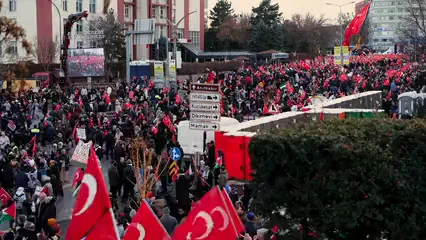
Summary of Key Points
This section will provide a concise overview of the article’s main arguments and insights, highlighting the overarching themes of the attack’s motivations, implications, and the responses from both sides. It will touch upon several key areas:
- The origins of Hamas and its historical role in the Israeli-Palestinian conflict.
- Immediate motivations for the October 7 attack.
- The regional and international context influencing Hamas’s decision.
- The impact of the attack on Israeli policy and Palestinian sentiment.
- Potential long-term consequences for the region and the global political landscape, including humanitarian concerns.
The attack on October 7 resonates deeply within the historical context of the Israeli-Palestinian conflict. It is essential to understand Hamas’s origins, its evolution as a political and militant entity, and its ongoing struggle against what it perceives as oppression. The ramifications of this assault extend beyond immediate violence, affecting diplomatic relations and humanitarian situations in Gaza and Israel. As we navigate through these themes, it becomes clear that the motivations behind the attack are intricately tied to both immediate grievances and long-standing issues within the region.

What is Hamas?
Hamas stands as a formidable Palestinian political and militant organization. Established in 1987, it emerged from the first Palestinian uprising against Israeli occupation. The group’s name translates to “Islamic Resistance Movement,” reflecting its Islamist ideology. While it governs the Gaza Strip since 2007, Hamas is classified as a terrorist organization by many nations, including the United States and the European Union.
Hamas operates with two main wings. The political wing engages in governance and diplomacy, while the military wing, known as the Izz ad-Din al-Qassam Brigades, orchestrates armed resistance against Israel. This dual structure often leads to confusion. On one hand, Hamas presents itself as a legitimate political entity advocating for Palestinian rights. On the other, its military operations involve violent tactics aimed at achieving its objectives.
The group’s history is marked by a series of conflicts with Israel, including significant escalations in 2008, 2012, and 2014. Each confrontation has left deep scars on both sides, particularly among Palestinians living in Gaza, where the humanitarian conditions remain dire.

If you’re interested in understanding the full history of Hamas and its implications, check out “Hamas: A History from Within” by Azzam Tamimi. This book delves into the origins and motivations of Hamas, providing a comprehensive backdrop to the ongoing conflict.
Goals of Hamas
Hamas’s declared objectives include the establishment of an Islamic state governed by Sharia law across historic Palestine, which encompasses present-day Israel, the West Bank, and Gaza. Its charter explicitly rejects Israel’s right to exist, positioning the organization as a staunch opponent of Israeli policies. Initially, Hamas indicated a willingness to accept a Palestinian state limited to Gaza and the West Bank. However, it maintains its claim over all of historic Palestine, which complicates any potential negotiations for peace.
Hamas’s ideology is deeply rooted in resistance against perceived Israeli oppression. The organization frames its actions as a response to decades of violence against Palestinians, including military actions and settlement expansions. This narrative resonates strongly within Gaza, where many view Hamas as a legitimate defender of Palestinian rights.

Leadership and Alliances
The leadership structure of Hamas has evolved over time. Key figures include Ismail Haniyeh, the political chief, and Yahya Sinwar, who leads the military wing in Gaza. Their leadership is often characterized by a blend of pragmatism and militancy, attempting to balance governance with armed resistance.
Hamas has forged crucial alliances with regional powers, chiefly Iran and Syria. Iran provides financial support, military training, and arms to Hamas, enhancing its operational capabilities. This relationship is critical, especially as regional dynamics shift, impacting Hamas’s strategy and ability to act. Furthermore, Qatar’s support has also played a significant role, offering a safe haven for some leaders and financial aid to the Gaza Strip.
The complex web of alliances and leadership dynamics shapes Hamas’s actions and responses within the ever-evolving Middle Eastern landscape.

For a deeper dive into the political landscape, consider reading “The Israeli-Palestinian Conflict: A People’s War” by James L. Gelvin, which provides an insightful perspective on the intricate relationships and historical narratives surrounding this ongoing struggle.
The Role of Regional Politics
Hamas’s decision to attack on October 7, 2023, did not occur in a vacuum. Regional politics played a significant role in shaping its strategy. One of the pressing factors was the push for Arab-Israeli normalization. Countries like the United Arab Emirates and Bahrain had recently signed agreements with Israel, signaling a shift in regional alliances. This normalization threatened Hamas’s narrative as the primary defender of Palestinian rights. The group likely viewed the attack as a way to reassert its relevance amidst these changing dynamics.
Iran’s unwavering support for Hamas also influenced the group’s calculations. Tehran has been a significant backer, providing financial resources, military training, and arms. This support strengthened Hamas’s position, especially as it felt emboldened by Iran’s commitment to opposing Israel. In the context of a rapidly evolving geopolitical landscape, Hamas’s leadership may have believed that a decisive attack would garner regional attention and reaffirm their role in the Palestinian resistance.

Humanitarian Crisis in Gaza
The dire humanitarian conditions in Gaza cannot be overlooked when considering Hamas’s motives. With unemployment rates soaring and access to basic necessities severely restricted, many Gazans live in overwhelming poverty. This environment has fostered deep-seated resentment towards Israel and its allies. Hamas, seeking to capitalize on this discontent, presents itself as a champion of the oppressed.
Public sentiment within Gaza significantly impacts Hamas’s legitimacy. Many residents view the organization as their only viable defense against perceived Israeli aggression. Despite the criticism of its governance, the group remains popular among those who feel marginalized and forgotten. The ongoing blockade and military actions have created a narrative where Hamas’s military efforts are framed as a necessary response to ongoing Israeli oppression, reinforcing its support base. As a result, the humanitarian crisis not only fuels Hamas’s actions but also solidifies its standing among the Palestinian population.

For those interested in understanding the humanitarian implications, “Gaza: An Inquest into Its Martyrdom” by Norman Finkelstein provides a compelling narrative on the impact of conflict on the civilians of Gaza. This book sheds light on the ongoing humanitarian crisis and the complexities involved.
Israeli Response
In the aftermath of the October 7 attacks, Israel reacted swiftly and decisively. Prime Minister Benjamin Netanyahu declared that the nation was “at war” with Hamas, marking a significant escalation in the conflict. The Israeli military launched extensive airstrikes across Gaza, targeting Hamas infrastructure, command centers, and rocket launch sites. The objective? Dismantle Hamas’s military capabilities and restore security to Israeli citizens.
Israel’s response was not just military. Politically, it galvanized public support for a robust offensive against Hamas. Netanyahu’s government faced criticism for its previous handling of security but shifted the narrative to one of vengeance and national unity. The Israeli public, shaken by the scale of the attacks, rallied behind the government’s vow to retaliate.
Internationally, responses varied widely. The United States reaffirmed its support for Israel, emphasizing its right to defend itself. Meanwhile, the United Nations and various humanitarian organizations expressed grave concern over the escalating violence and its humanitarian implications for Gaza’s civilian population. Countries across Europe and the Middle East called for restraint, highlighting the urgent need for humanitarian access to those affected in Gaza.
The ramifications of Israel’s military response are profound. With ongoing airstrikes leading to significant casualties, the international community braces for a potential humanitarian crisis. This situation complicates diplomatic relations and foreign policy regarding the Israeli-Palestinian conflict, as nations grapple with how best to address both Israeli security needs and the humanitarian plight of Palestinians.

Long-term Consequences
Shifts in Regional Dynamics
The October 7 attack has significantly altered the balance of power in the region. Hamas’s unprecedented assault on Israel has not only shifted military dynamics but also redefined alliances. Traditionally viewed as a terrorist organization, Hamas is now seen by some as a formidable player in Middle Eastern politics. This shift could embolden other militant groups, leading to a more fragmented and volatile landscape.
In response to the attack, Israel has strengthened its military posture and sought closer ties with allies, particularly the United States. This might lead to a renewed focus on regional security cooperation, particularly in countering Iranian influence. However, the increased militarization could also escalate tensions further, potentially leading to greater conflict.
Moreover, Arab nations that have sought normalization with Israel may find their positions challenged. The attack has reignited discussions about Palestinian rights and the broader Arab-Israeli conflict, putting pressure on leaders who have engaged with Israel to reconsider their stances. This dynamic could lead to a renewed focus on Palestinian statehood, complicating future diplomatic efforts.
As for Israeli-Palestinian relations, the attack serves as a stark reminder of the deep-seated grievances that fuel the conflict. Future peace negotiations may be marred by distrust and heightened animosity, making resolution increasingly elusive. The long-term implications could involve a cycle of retaliation, undermining any prospects for stability in the region.

Humanitarian Considerations
The ongoing humanitarian crisis in Gaza is a direct consequence of the October 7 attack and subsequent Israeli military operations. The airstrikes have devastated infrastructure, leading to widespread destruction of homes, hospitals, and schools. The death toll in Gaza has soared, with tens of thousands reported dead, many of whom are civilians. The humanitarian situation is dire, with access to essential services severely restricted.
Food insecurity is rampant, affecting nearly all of Gaza’s 2.3 million residents. The blockade, exacerbated by the conflict, has left many without access to clean water, medical supplies, or adequate shelter. International humanitarian organizations are struggling to provide aid amid continuous hostilities, leading to calls for ceasefires to allow essential supplies to reach those in need.
Diplomatic avenues for resolution appear limited. While some nations push for negotiations, others focus on immediate humanitarian assistance. The complexity of the situation demands a multifaceted approach that addresses both the urgent needs of Gazans and the underlying political issues fueling the conflict.
The humanitarian crisis is not merely a local issue; it resonates globally. Images of suffering civilians in Gaza prompt international outrage, influencing public opinion and diplomatic relations. The challenge will be finding a balance between addressing humanitarian concerns and navigating the political landscape of the region, which is fraught with challenges.

To grasp the full extent of the humanitarian crisis, “The Gaza Strip: The Political Economy of De-Development” by Sara Roy offers a critical analysis of the ongoing de-development in Gaza, shedding light on the socioeconomic factors contributing to the humanitarian crisis.
Future of Hamas and Palestinian Politics
The October 7 attack has thrown Hamas’s position in Palestinian politics into a whirlwind. With the dramatic escalation of violence, the group’s role as a key player has been both solidified and challenged. On one hand, Hamas has reasserted itself as a dominant force, reclaiming a narrative of resistance against Israeli aggression. Many Palestinians view the attack as a bold statement of defiance. This sense of empowerment could enhance Hamas’s standing among the populace, especially given the dire humanitarian conditions in Gaza.
However, the aftermath presents significant challenges. The scale of the Israeli military response has led to catastrophic civilian casualties. Reports indicate over 41,600 Palestinian deaths, primarily among non-combatants. Such devastation raises serious questions about Hamas’s governance and its ability to protect its people. The group’s image as a protector may falter if it fails to provide safety and basic needs amidst the chaos.
For the Palestinian Authority (PA), the attack complicates its already tenuous position. The PA has been struggling to maintain legitimacy, often criticized for its ineffective governance. As Hamas gains traction, the PA risks becoming increasingly marginalized. This dynamic could lead to intensified competition for leadership within Palestinian politics.
Other factions, like Palestinian Islamic Jihad, may also seek to capitalize on the situation. They could push for more aggressive actions against Israel, challenging Hamas’s narrative and tactics. This competition could fragment Palestinian unity, making it harder to achieve collective goals.
Opportunities exist, however. If the international community responds with significant humanitarian aid and diplomatic pressure, it could provide a path forward. Both Hamas and the PA might need to engage in dialogue to address the humanitarian crisis. A unified front could ultimately strengthen their negotiating power on the global stage.
In summary, while Hamas’s attack has reaffirmed its role in Palestinian politics, the consequences of this action introduce a complex landscape. The interplay between power dynamics, humanitarian issues, and external influences will shape the future of Palestine. The coming months will be crucial in determining whether this moment marks the beginning of a new chapter or a deeper entrenchment in conflict. The stakes are high, and the outcomes remain uncertain.

For those looking to understand the broader implications of the conflict, “The Question of Palestine” by Edward W. Said provides a profound exploration of the Palestinian narrative and its significance within the larger context of the conflict.
Conclusion
In conclusion, the October 7 attack by Hamas represents a critical juncture in the Israeli-Palestinian conflict, encapsulating decades of unresolved grievances and escalating tensions. As both sides brace for the implications of this event, understanding the underlying motivations and broader context becomes essential for any meaningful dialogue about peace and resolution. The path forward remains fraught with challenges, but recognizing the complexities of this conflict is a crucial step towards fostering a more informed and empathetic discourse.
The attack has highlighted the ongoing humanitarian crisis in Gaza, creating a dire situation for millions of civilians. The international community is called to respond with urgency, ensuring humanitarian aid reaches those in need while also advocating for a ceasefire. This moment offers a unique opportunity to reassess strategies for peace, focusing on dialogue rather than violence.
As Hamas and Israel engage in this brutal back-and-forth, it is vital for all stakeholders to prioritize the lives of civilians. History teaches us that cycles of violence rarely yield lasting solutions. Instead, a commitment to dialogue and understanding can pave the way for a more stable future. The complexities of the Israeli-Palestinian conflict require nuanced approaches that address historical grievances while fostering coexistence.
The future of the region hinges on addressing both immediate concerns and long-term aspirations for peace. Only through comprehensive negotiations can the aspirations of both Israelis and Palestinians be met. As we move forward, the lessons from October 7 must guide our collective efforts to build a just and lasting peace.
FAQs
Understanding the complexities behind Hamas’s actions is crucial, especially considering the recent attack. Why did Hamas attack?
Please let us know what you think about our content by leaving a comment down below!
Thank you for reading till here 🙂
All images from Pexels




